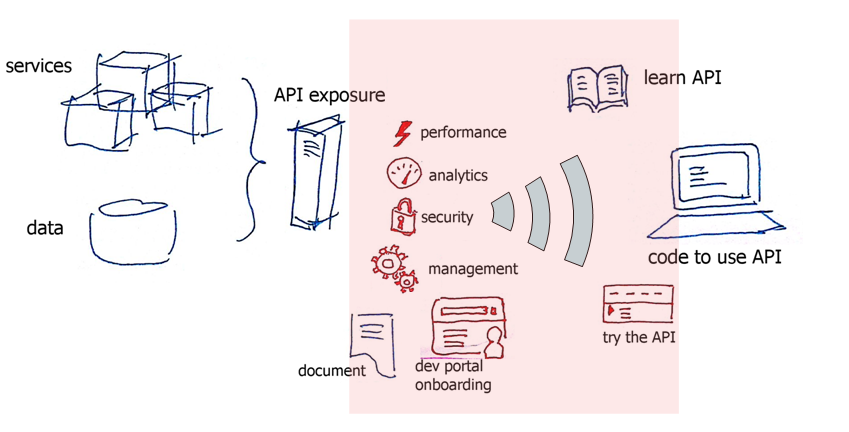Apigee is hot recently. It has raised $20 million in its fifth round of funding. What magic it has? I spent some time today to have a look at it.
Apigee is an API management platform and services company. It benefits both API providers and developers who build their apps with APIs.
Apigee Enterprise
Apigee Enterprise product is an API proxy plus developer portal.
Usually when an organization open its internal services or data to external, it develops the API and exposure it, with necessary document published. Application developers learn the API by reading the document, and then code to use the API.

Apigee helps API provider by providing API management, security, analytics etc. It provides developer portal for API provider to management developer onboarding, and also help developer to learn the API by playing with it.

Console To-Go
Apigee Enterprise features are not available to free subscriber of Apigee, excepts the console that let developer learn an API by playing with it. Apigee opens this service to free subscriber as Console To-Go.
I try to create my own Console To-Go:
Create an API on Google Application Engine: time API , it simply return the current time since epoch.
Write the WADL for the API.
Create a new console on Apigee Console To-Go, upload the WADL file for my playground API.
That’s all I need to do. Now the console is ready and anyone can try my time API on the console. This is a snapshot of API request-response:
Usergrid
A cloud-based data service for application developer, especially for mobile application developer. It provides a core set of commonly used social media application objects, including a rich user model, as well as the ability to create new objects.
REST API is provided, with data model in JSON.
Features includes:
User model. Organize users into groups, teams or other structures. User authentication via Facebook, Twitter or other OAuth services. User profile synchronization.
Collections. Any type of application data in JSON. Data sharing between users and applications.
Messages and activities. Automates user interaction e.g. status updates, check-ins, comments in the form of activity streams. Support messaging (application internal) and notifications by delivering activities to connected users.
Data analytics. Log events generated by application. Store, search and analyze at any level of scale.